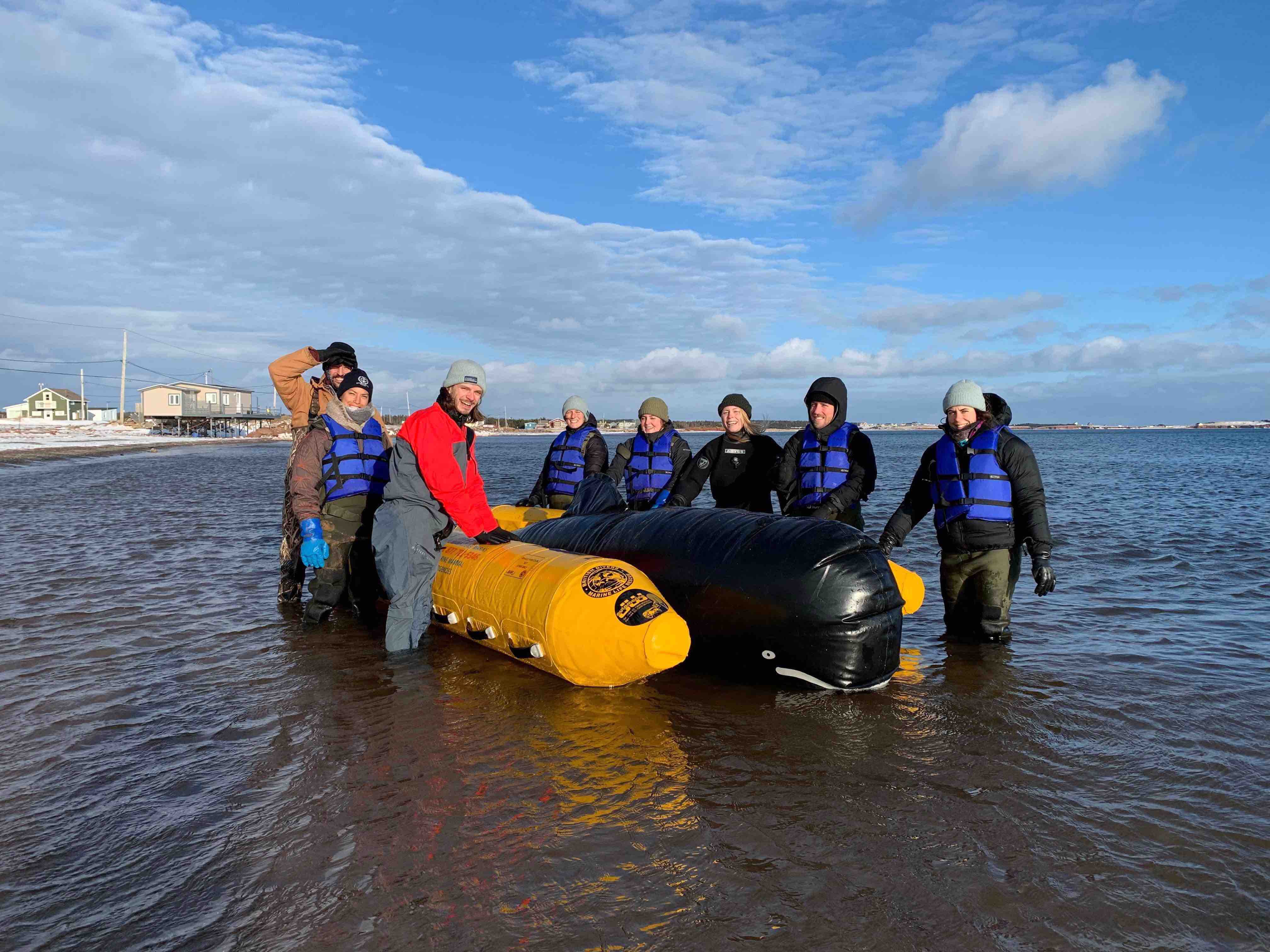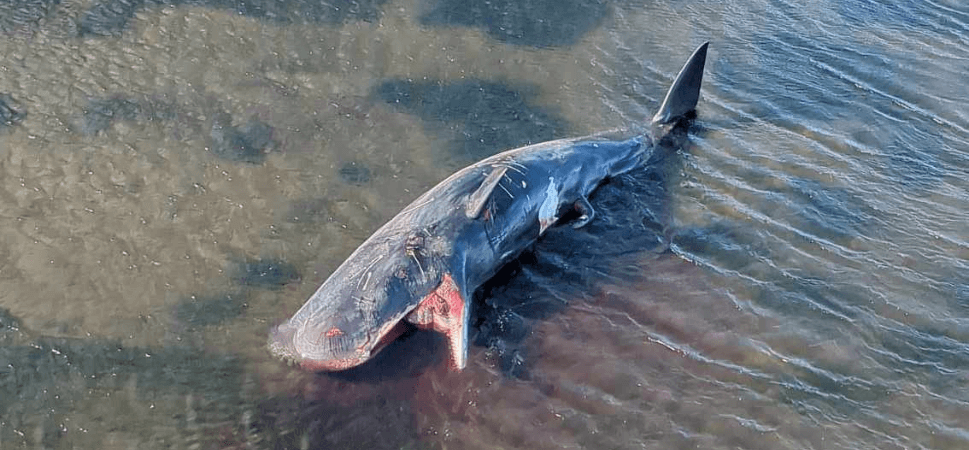On February 7, Nova Scotia’s Marine Mammal Emergency Response Network, the Marine Animal Response Society (MARS), received a report of a live stranded dolphin near Blandford, Nova Scotia. After arriving on the scene, the crew determined that the cetacean in question was dead and that it was not a dolphin but a Cuvier’s beaked whale, recognizable by its prominent lower jaw with only two teeth. This is the first documented case of this species on the Canadian east coast.
Poorly Understood Species
Along with freshwater dolphins, beaked whales are currently considered the most primitive in terms of the physiognomy of their skulls. They are poorly known, as they inhabit deep waters and are difficult to track and study. Cuvier’s beaked whales reside in the waters around the Maritime provinces, particularly in very deep zones. Along with other cetaceans such as the sperm whale, it is one of those so-called “great divers”, whose physiology is adapted to swimming down to tremendous depths. They have exceptional abilities: their muscles contain ten times more myoglobin than other mammals, a protein that stores oxygen in the cells, while their blood is redistributed when diving to supply vital organs first such as the heart and brain. They can remain under water for more than two hours and reach depths of nearly 3,000 metres, a record amongst marine mammals. Coastal observations are extremely rare; often, when a beaked whale is reported near shore, it involves a struggling animal. Thus, in order to acquire valuable data on the species and on the causes of the stranding, the whale was secured by the MARS team with the help of volunteers and individuals from Fisheries and Oceans Canada to prevent it from being carried out by the waves and the blizzard predicted to arrive within just a few hours of the incident.
On February 14, the team of veterinarian Pierre-Yves Daoust of the Atlantic Veterinary College joined up with teams headed by the MARS and by Dr. Don McAlpine of the New Brunswick Museum to conduct the biopsy. The body of the 4.5 m long whale bears scratch marks, the result of interactions with other individuals of the same species. Initial observations of the carcass a week earlier suggested that it was an emaciated animal, but more in-depth study confirms that the young immature male is in good condition. There are no visible traces of injuries or obvious signs of disease. Pieces of rope are found in the animal’s stomach, but it is impossible to link its death with the presence of this debris. The carcass is finally transported to the New Brunswick Museum, where it will be cleaned and added to the existing collection.
Beaked Whales in the St. Lawrence
Even if no Cuvier’s beaked whale carcass has ever been studied previously on the Canadian east coast, other representatives of the beaked whale family, a.k.a. Ziphiidae, have been found in the last 20 years in the waters of St. Lawrence.
On November 9, 1994, a team from the Canadian Wildlife Health Cooperative (CWHC) Quebec Regional Centre travels to Montmagny to perform a post-mortem examination on a 7.40-metre long, adult female northern bottlenose whale. No abnormality is detected that might explain the death of this whale. Three days later, an immature male of the same species is found beached 45 km downstream in Saint-Roch-des-Aulnaies. This specimen, smaller than the previous one (3.90 m), is transported to the Faculty of Veterinary Medicine in Saint-Hyacinthe. The presence of milk in the mammary glands of the adult female is grounds to believe that the animal is lactating and the second individual might be its offspring. The presence of these two specimens in the Estuary remains a mystery, as these whales also live in very deep waters. Their deaths may have been linked to the northwest winds that had been recorded in the preceding days. This is the third time that the presence of these animals was recorded in the St. Lawrence; another northern bottlenose whale was beached in similar climatic conditions at Isle-aux-Coudres in the 1940s, and another in Sept-Îles on September 10, 1997.
On June 22, 2006, Forillon National Park in the Gaspé Peninsula is the scene of the stranding of another beaked whale species, a Sowerby’s beaked whale. Then, more recently, on July 3, 2013, the discovery of a young male Sowerby’s beaked whale by the owner of Île aux Pommes received considerable media attention (in French).
The skull of one of the northern bottlenose whales from Montmagny and the entire skeleton of the Sowerby’s beaked whale from Île aux Pommes are now on display at the Marine Mammal Interpretation Centre in Tadoussac.
To learn more:
Cuvier’s beaked whale discovered for first time in Maritimes, CBC News, 16 février 2016
On Whales Online:
Les réactions des baleines aux sonars actifs ont été mesurées (in French)





